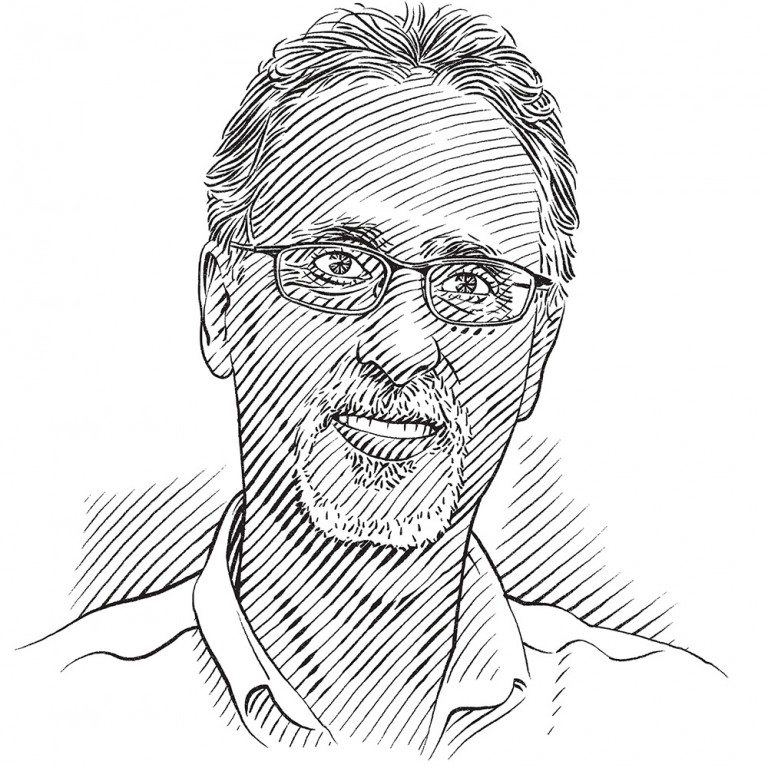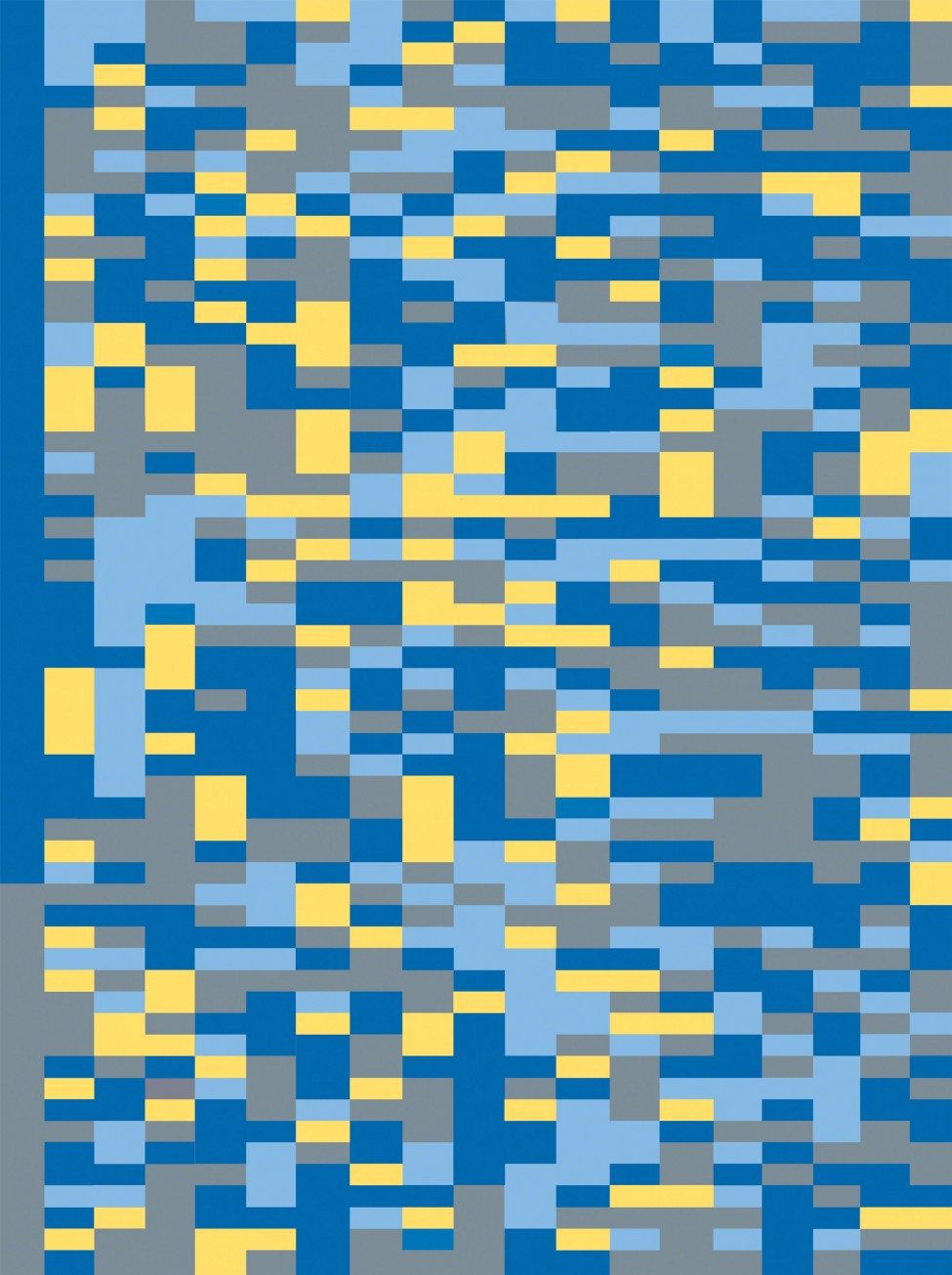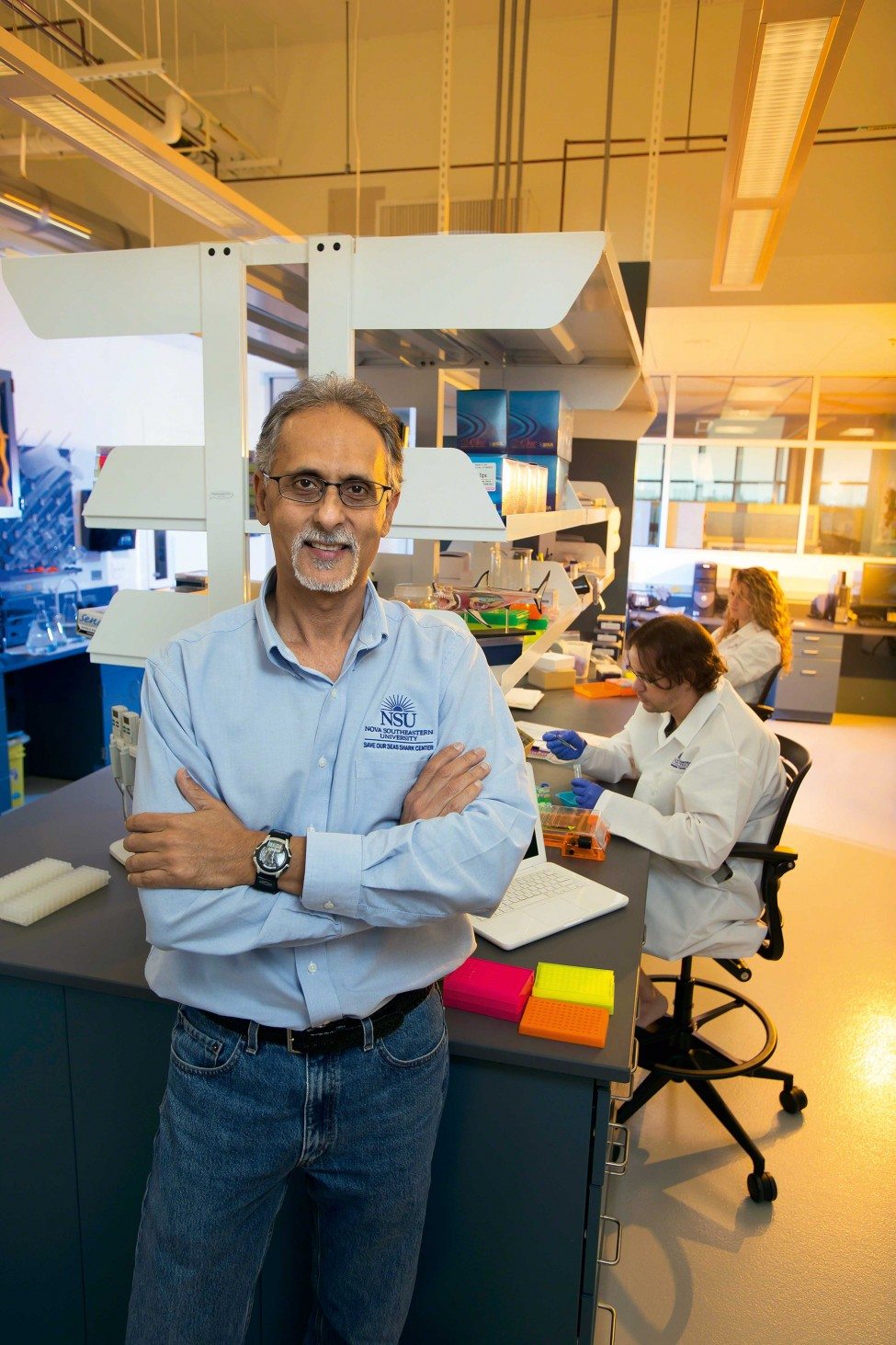High-Tech Conservation
Professor Mahmood Shivji explains how scientific research being carried out by the Save Our Seas Shark Research Center in Fort Lauderdale is having a global impact on shark conservation.
Photo by Thomas Peschak
The Save Our Seas Shark Research Center USA (SOSSRC), one of three named centres supported by the Save Our Seas Foundation (SOSF), is located in Fort Lauderdale, Florida, USA. The SOSSRC is housed in a new, architecturally award-winning building at Nova Southeastern University’s Oceanographic Center, and includes state-of-the-art research laboratories and fieldwork facilities for conducting cutting-edge, inter-disciplinary studies. The association between the SOSF and Nova Southeastern University was initiated in 2008 by directive of the Founder of the SOSF, with the formal naming of the association as the Save Our Seas Shark Center in 2009 (note the slight difference in the original and current names). With each of the three SOSF centres starting to focus on their strengths and targeting specific needs, an administrative decision was made in 2013 to highlight the remit and expertise of the SOSSRC by including the word ‘research’ in the centre name.
The SOSSRC primarily focuses on conducting scientific research aimed at expanding knowledge to aid the conservation, management and understanding of sharks and rays on a worldwide basis. The SOSSRC specialises in taking integrative, multidisciplinary approaches to research, which includes combin-ing high-tech genetics research and fieldwork to holistically illuminate aspects of shark and ray biology that would be difficult to decipher using single discipline approaches alone. Another hallmark of the SOSSRC is its international, and in most instances global, scope of work on sharks. A key aspect of the SOSSRC also is that it serves as an academic unit within Nova Southeastern University, and as such also functions in an educational capacity. Indeed, most of the past and current scientists at the SOSSRC have been or are graduate students performing research as part of earning their Masters and PhD degrees.
Since its inception, the SOSSRC has worked in close partnership with the Guy Harvey Research Institute, another academic unit of Nova Southeastern University and the research arm of the Guy Harvey Ocean Foundation, to accomplish larger goals. This partnership works extremely well for two reasons. First, the SOSSRC and Guy Harvey Research Institute share broadly similar goals – scientific research to facilitate conservation, improve basic knowledge and guide sustainable use of our ocean’s fishes. Second, by combining expertise the two entities have been able to tackle crucial research issues that are global in scope, and would be challenging for each entity to address alone.
Some examples of research by the SOSSRC and its partners that have had a global impact on shark conservation include the development of novel, rapid DNA forensic methods to identify the origins of shark body parts found in trade. This groundbreaking research found immediate application in shark conservation and management practice internationally, including enabling law enforcement agencies to successfully identify and prosecute many operators conducting illegal shark fishing and trade. This work was also a key element in a high profile, collaborative study with Dr S Clarke from Imperial College (UK) that made the first quantitative determination of sharks traded by individual species, and the total number of sharks traded per year in the global fin markets. The staggering number of sharks (26 to 73 million) revealed by this study to be contributing to the fin markets brought international attention to the issue of shark overfishing. Equally importantly, this revelation has spurred policy changes by many governments to reduce this previously unrecognised and unsustainable level of destruction of our ocean’s apex predators.
Research conducted by the SOSSRC has also led to the discovery of new species of large sharks and rays, including a hammerhead species that looks very similar to the scalloped hammerhead but is actually distinct evolutionary lineage. This surprising discovery of another large hammerhead shark increases the total number of known hammerhead species from eight to nine, highlighting how much we still have to learn about shark diversity.
Very recently, the SOSSRC and colleagues from Cornell University have dived into a new frontier in genetics research, studying shark species at their fundamental biological core – their entire genetic blueprint or ‘genomes’. This ongoing work has produced the first, large-scale view of the genetic repertoire of one of the world’s most charismatic animals, the great white shark. True to its fascinating form and biology, an in-depth look at the white shark’s genes has revealed remarkable findings, including, and quite unexpectedly, more similarity in some of its protein categories to humans than the zebrafish, the quintessential bony fish research model. These findings further underscore that even more surprises are likely in store as we dig deeper into understanding how sharks work at the level of their genes.
SOSF Shark Research Center
The SOSF Shark Research Centre (SOSF-SRC) is located in Florida and was established at Nova Southeastern University in 2009 by directive of the founder of the Save Our Seas Foundation.
The centre focuses mainly on scientific research aimed at increasing knowledge to aid the conservation, management and understanding of sharks and rays worldwide.
A hallmark of the SOSF-SRC is that it specialises in taking integrative, multi-disciplinary approaches to research and conservation, which include combining high-tech genetics, genomics and field work to illuminate holistically aspects of shark and ray science that would be difficult to decipher using single-discipline approaches alone.
The SOSF-SRC also serves as an academic unit within Nova Southeastern University and as such its function includes the training of students from around the world in marine research and conservation. Although advanced scientific research is the main focus of the SOSF-SRC, our staff also undertake educational and outreach activities involving primary (US middle) and secondary (US high) school students.


